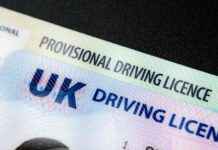Edinburgh-Made Fighter Jet Radar Successfully Tested in Flight
A groundbreaking new fighter jet radar developed in Edinburgh has recently undergone its first flight test, marking a significant milestone in aviation technology. The European Common Radar System Mark 2, created by engineers at Leonardo UK, soared through the skies on Friday for testing and evaluation. This cutting-edge radar system is designed to equip Royal Air Force pilots with advanced capabilities to locate, identify, and suppress enemy air defenses, enhancing their combat efficiency and effectiveness.
Air Commodore Nick Lowe, Head Capability Delivery Combat Air and Typhoon Senior Responsible Officer, Royal Air Force, emphasized the importance of evolving Typhoon’s air combat capability to ensure the aircraft’s readiness in deterring potential aggressors, defending the nation, and supporting the NATO alliance. The successful first flight of the ECRS Mk2 prototype radar in the test aircraft signifies a positive step towards enhancing the Typhoon’s combat capabilities and operational effectiveness.
Advancements in Radar Technology
Tim Bungey, Chief Engineer for ECRS Mk2 at Leonardo UK, highlighted the progress made in the development of the radar system, stating that the production design has been advancing alongside the testing phase. He mentioned that key components such as the Processor, Receiver, and Antenna Power Supply and Control units have been re-engineered to enhance the capacity, capability, and performance of the Mk2 system. These enhancements align with the integration of new antenna and electronic warfare capabilities, showcasing the UK’s expertise in radar design and innovation.
Andy Holden, Radar Delivery Director at BAE Systems, underscored the significance of the Typhoon radar program in supporting over 600 jobs within the UK’s combat air industry. He emphasized that initiatives like the ECRS Mk2 contribute to maintaining the country’s sovereign capability in developing and integrating cutting-edge systems into frontline combat aircraft like the Typhoon. By investing in such projects, the UK not only retains critical expertise but also sustains hundreds of highly-skilled jobs in the aerospace sector.
Implications for National Defense
The successful testing of the Edinburgh-made ECRS Mk2 radar holds profound implications for national defense and security. By equipping Royal Air Force pilots with state-of-the-art radar technology, the UK enhances its ability to detect and respond to potential threats in the air, safeguarding its airspace and territorial integrity. The integration of advanced radar systems into frontline combat aircraft like the Typhoon strengthens the country’s military capabilities and strategic deterrence posture, ensuring readiness for any operational contingencies.
In conclusion, the successful flight test of the European Common Radar System Mark 2 represents a significant achievement in the field of aerospace technology. The collaborative efforts of engineers at Leonardo UK, supported by industry partners like BAE Systems, have led to the development of a cutting-edge radar system that will enhance the operational capabilities of Royal Air Force pilots. As the ECRS Mk2 progresses towards full-scale production and integration into frontline aircraft, it underscores the UK’s commitment to innovation, defense excellence, and technological advancement in the aviation sector.













